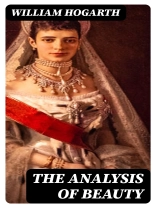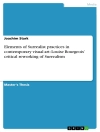In ‘The Analysis of Beauty, ‘ William Hogarth meticulously explores the principles of aesthetics and beauty, arguing against the prevailing notions of symmetry and proportion in art. Employing a blend of empirical observation and philosophical inquiry, Hogarth introduces the concept of the ‘Line of Beauty, ‘ a serpentine line that reflects the grace found in nature and art. His rich prose and illustrative engravings invite readers into a deeper understanding of visual harmony, offering both a critique and a celebration of Baroque and Rococo influences prevalent in 18th-century British art. The work situates itself within the broader Enlightenment discourse, bridging art and emerging scientific thought. William Hogarth, a preeminent English painter and engraver, was deeply influenced by the socio-political landscape of 18th-century England and the evolving discussions surrounding art’s purpose and morality. His experiences as an artist in a rapidly changing society, coupled with his keen observational skills, fueled his desire to articulate a theory of beauty that transcended conventional aesthetics. Hogarth’s commitment to social commentary through visual storytelling informs the insights presented in this work. This book is indispensable for scholars of art history, aesthetics, and cultural studies, as it provides a unique lens on Hogarth’s revolutionary ideas. Readers intrigued by the formulation of beauty and design in visual arts will find Hogarth’s analysis both enlightening and foundational, as it resonates with contemporary debates surrounding artistic expression.
Про автора
William Hogarth (1697–1764) was an eminent English painter, printmaker, pictorial satirist, and social critic, renowned for his keen observation of the complexities of 18th-century urban life. Primarily remembered for his satirical works and series paintings such as ‘A Harlot’s Progress’ and ‘A Rake’s Progress’, his influence extended beyond the canvas, engaging the broader discourse of aesthetics with the publication of ‘The Analysis of Beauty’ in 1753. In this treatorial essay, Hogarth delineated his theories on beauty, stressing the importance of the ‘serpentine line’ or ‘line of beauty’, which he considered essential to aesthetic appeal. Hogarth’s ‘The Analysis of Beauty’ forms a seminal text that reveals the intersection of art and societal norms, offering insights into the zeitgeist of his time. Known for his narrative inventiveness and moralistic undertones, Hogarth’s artistic output remains an indispensable reference for understanding the socio-political climate of Georgian England. His literary contribution in ‘The Analysis of Beauty’ showcased a pivotal moment where an artist’s reflections expanded to comment on the nature of visual attractiveness, thereby cementing his role not just as an artist but also as a thoughtful critic and theoretician in the field of art history.












